Image of the Day 2019 Archive
Explore our Image of the Day 2019 Archives!
November 2019
Hubble Eyes a 'Lonely' Galaxy
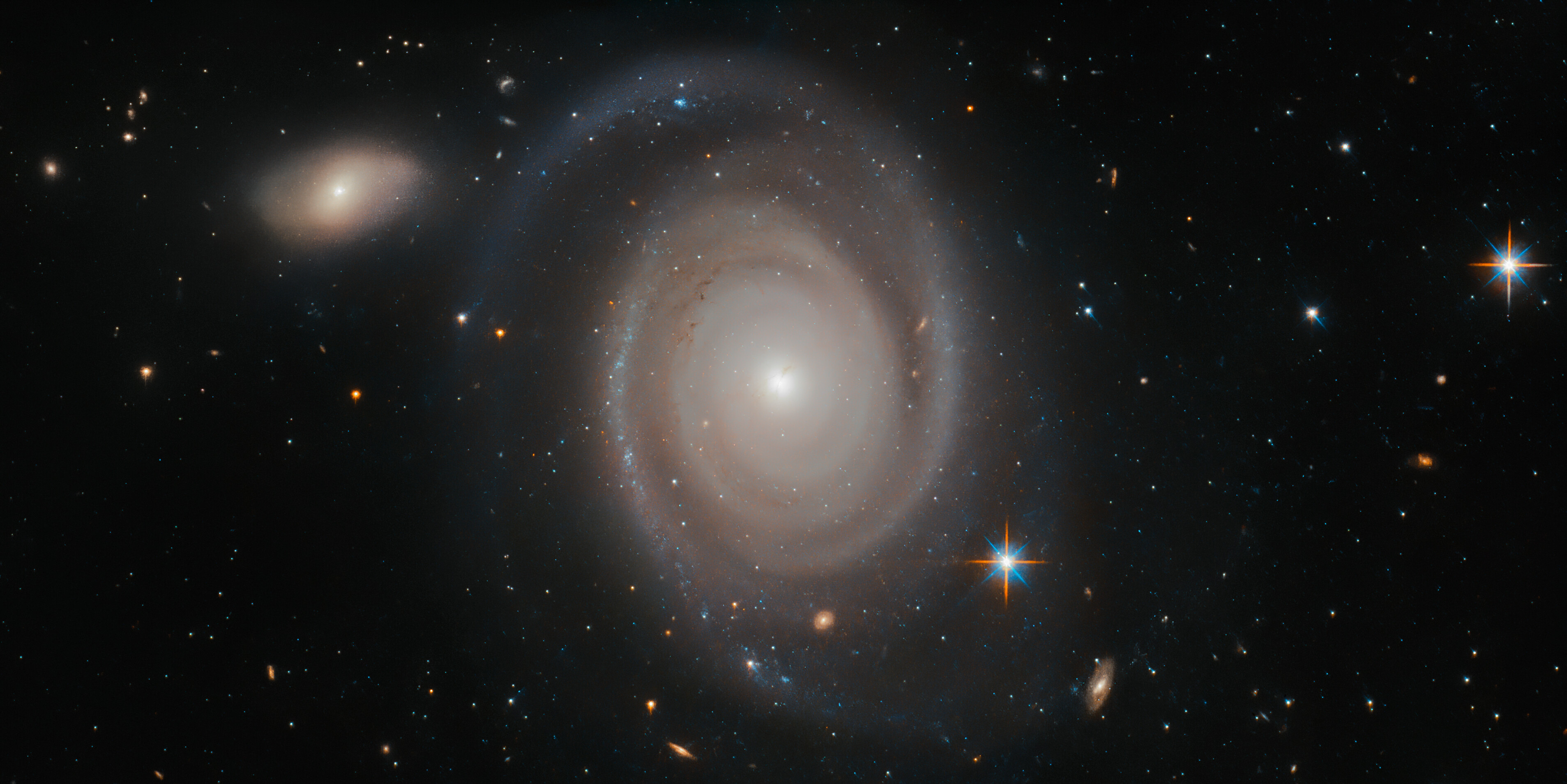
Friday, November 1, 2019: The spiral galaxy NGC 1706 may look a bit isolated drifting through the cosmos in this Hubble Space Telescope image, but this lonely galaxy has no shortage of neighbors. NGC 1706 belongs to a group of dozens of galaxies, all of which are held together by their mutual gravitational pull. It is located about 230 million light-years away from Earth in the constellation of Dorado, the Swordfish. — Hanneke Weitering
Starliner Aces Pad Abort Test
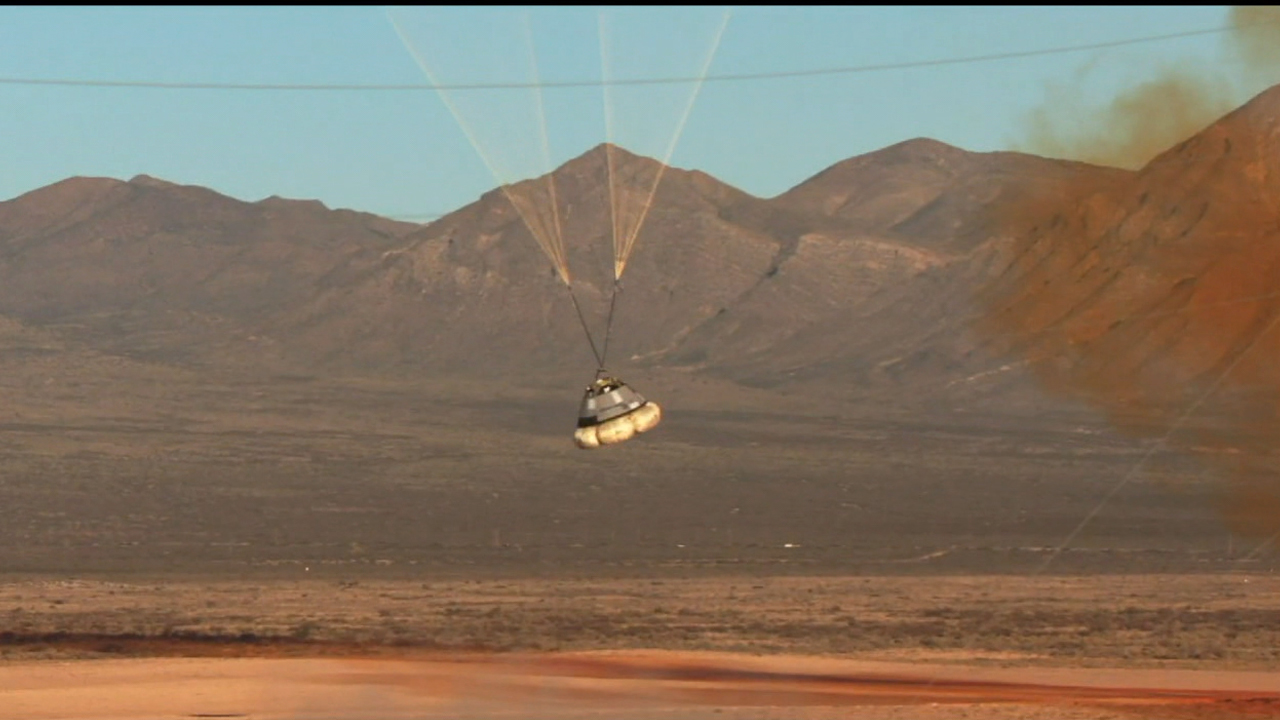
Monday, November 4, 2019: Boeing's CST-100 Starliner capsule floats back down to Earth above the White Sands Missile Range in New Mexico following a successful pad abort test this morning. Today's mission was an uncrewed test of the spacecraft's abort system, which would bring astronauts to safety in the event of an anomaly during launch. — Hanneke Weitering
A Glimpse of the Cosmos
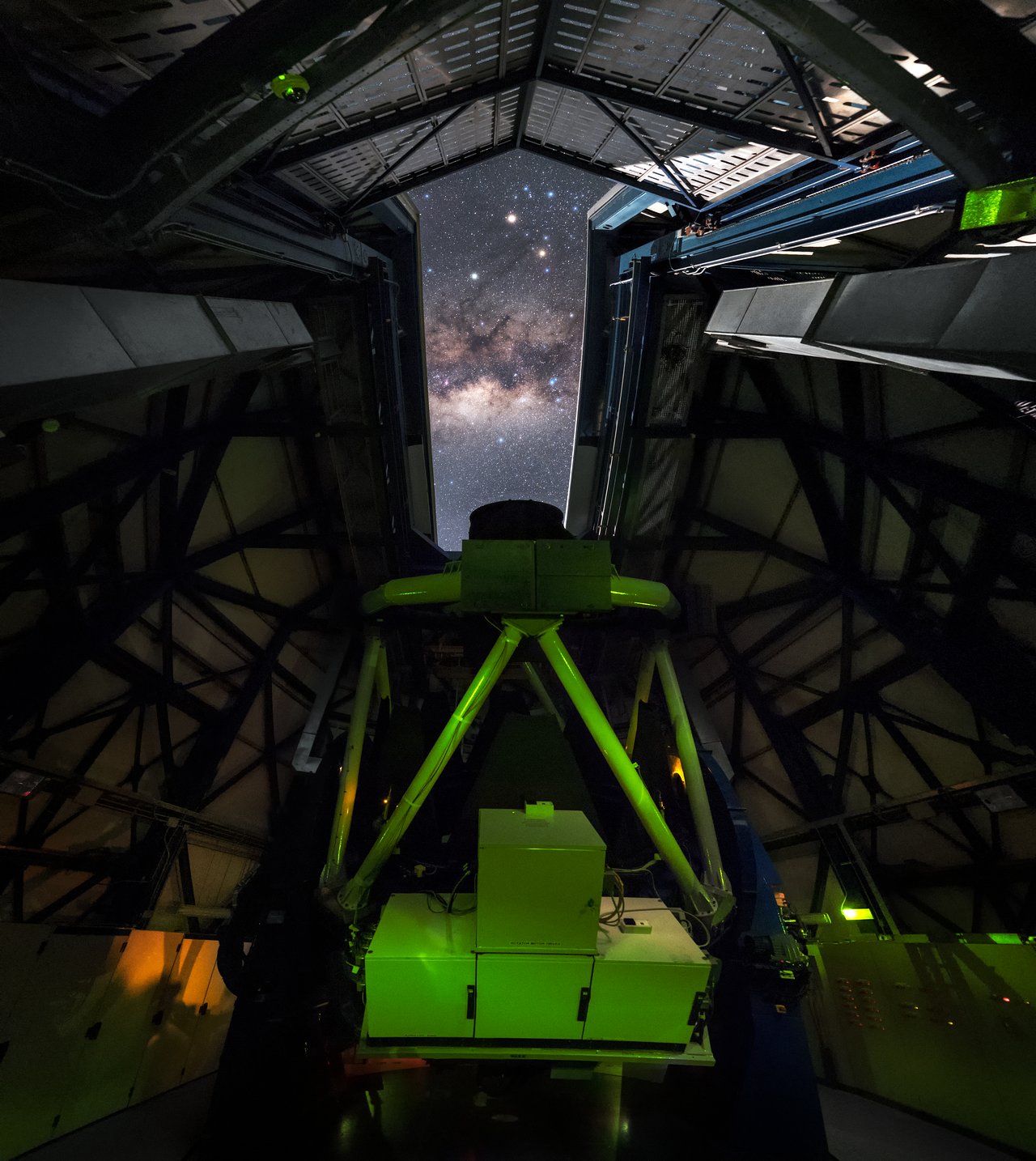
Tuesday, November 5, 2019: The Milky Way galaxy peeks through the opening of the VLT Survey Telescope (VST) in this image captured from inside the observatory by European Southern Observatory photo ambassador Babak Tafreshi. Located at the Paranal Observatory in Chile, VST is the largest telescope on Earth that observes the sky in visible light, or wavelengths of electromagnetic radiation that are visible to the human eye. Pictured front and center in this view is the OmegaCAM instrument, which can capture wide-field images of up to 256 million pixels. — Hanneke Weitering
S.S. Alan Bean Arrives at the Space Station
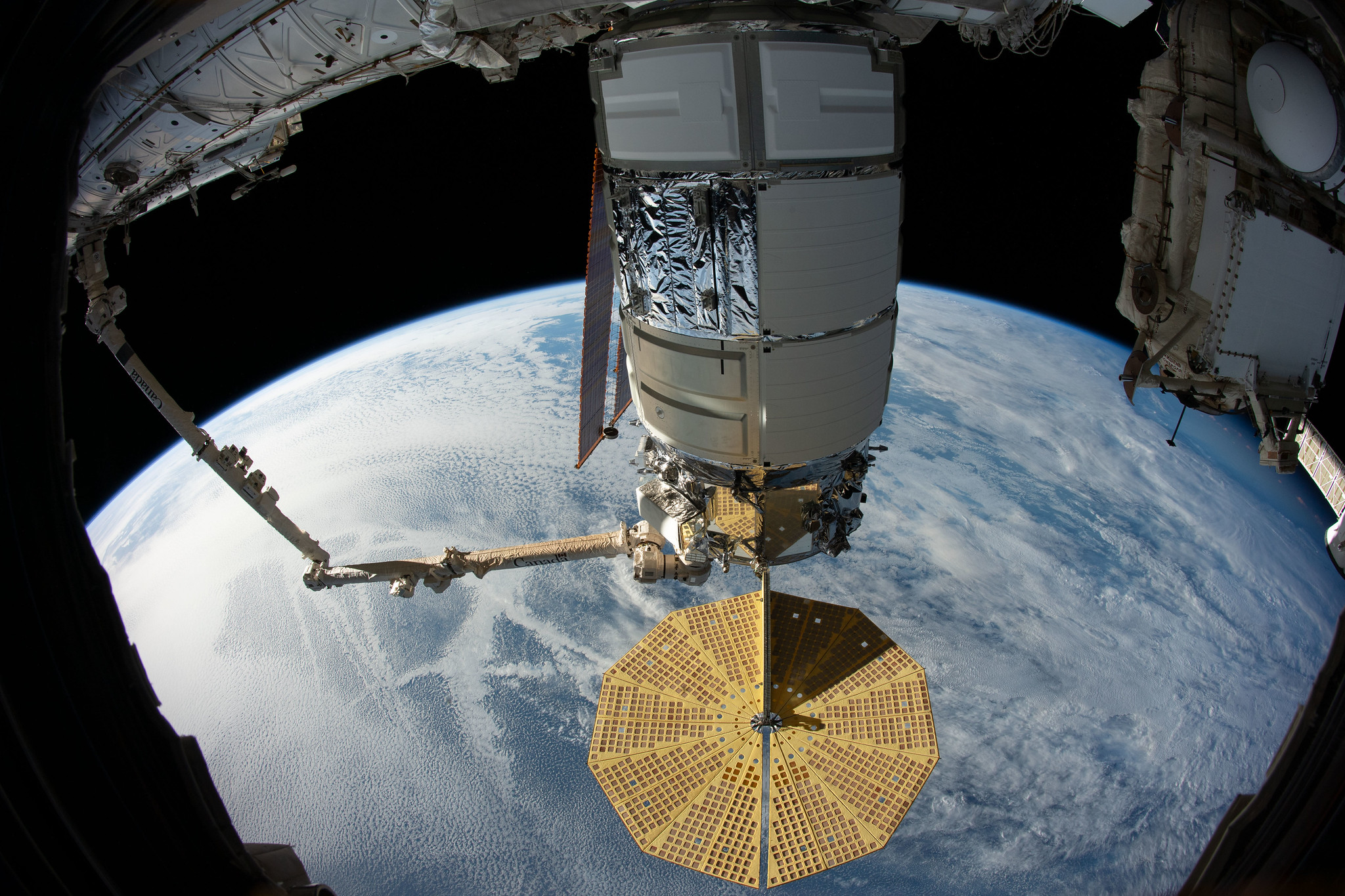
Wednesday, November 6, 2019: The International Space Station's Canadarm2 robotic arm grapples an incoming Cygnus cargo spacecraft in this photo taken by an Expedition 61 astronaut. The Cygnus spacecraft, named the S.S. Alan Bean, arrived at the orbiting laboratory on Monday (Nov. 4) carrying about 8,200 lbs. (3,700 kilograms) of supplies and science experiments for the six-person crew. — Hanneke Weitering
A Jovian Marble
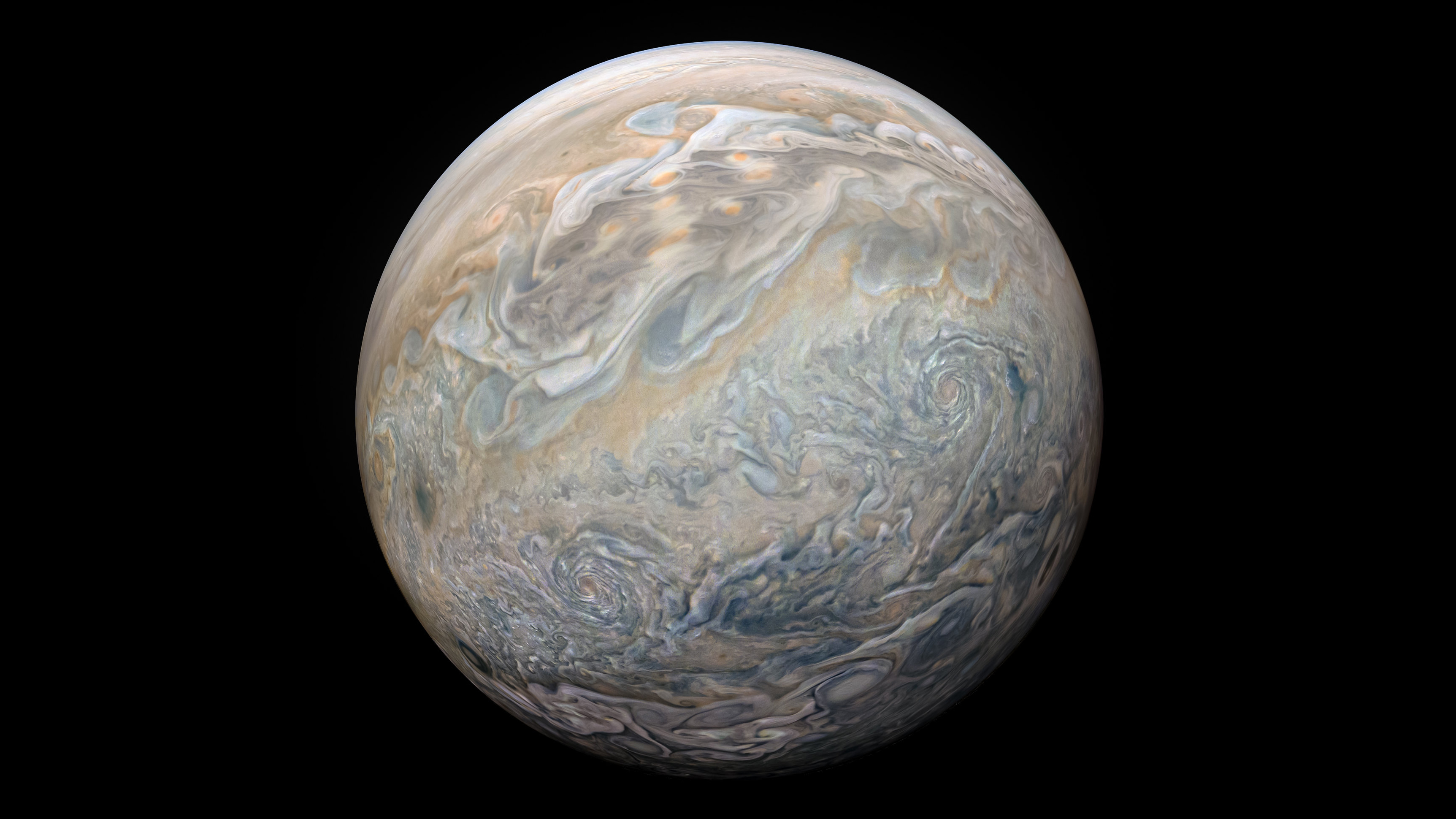
Thursday, November 7, 2019: Jupiter looks like a big, swirly space marble in this composite image from NASA's Juno spacecraft. Citizen scientist Kevin Gill processed this image using data collected by Juno during its 23rd close flyby of Jupiter, called a perijove, on Sunday (Nov. 3). — Hanneke Weitering
Hubble Spots a Cosmic Kaleidoscope
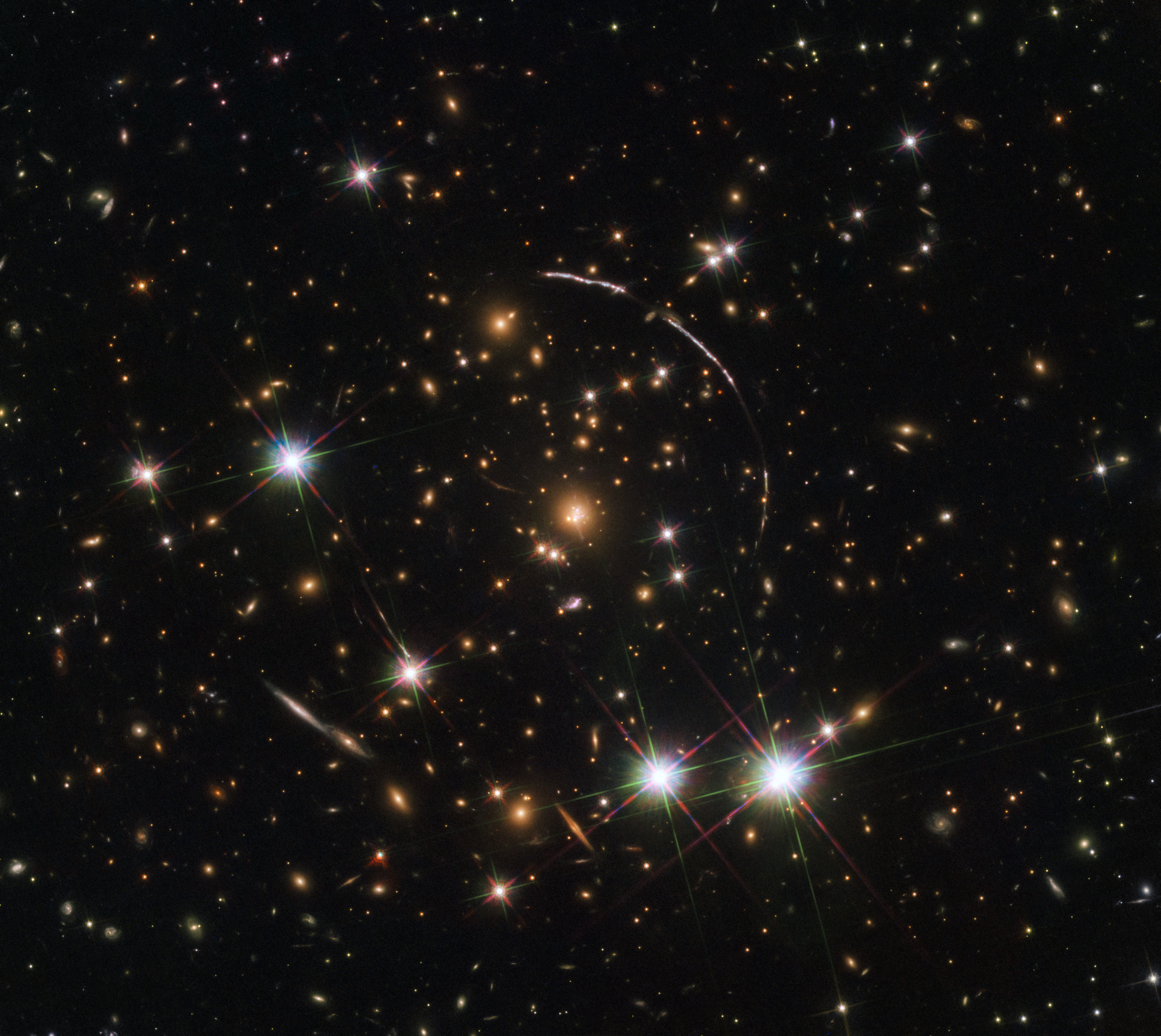
Friday, November 8, 2019: When the Hubble Space Telescope turned its gaze toward the remote galaxy known as the "Sunburst Arc," it saw not one but 12 separate images of the lone cosmic object. That's because there's a massive galaxy cluster in the foreground warping the light with its intense gravitational pull. This illusion is known as gravitational lensing, a phenomenon that Albert Einstein first described in his theory of general relativity. "This 'funhouse mirror' effect not only stretches the background galaxy image, but also creates multiple images of the same galaxy," NASA officials said in a statement. — Hanneke Weitering
Mercury's Transit Begins
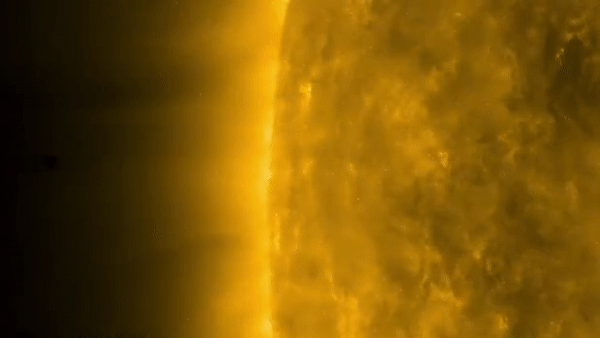
Monday, November 11, 2019: The tiny planet Mercury scoots across the sun's hot corona and onto its bright disk to mark the beginning of the planet's rare transit this morning. The transit began at 7:35 a.m. EST (1235 GMT), when Mercury made its way across the sun's edge. It will spend 5 hours and 28 minutes traveling across the face of the sun today, and you can watch it live online. — Hanneke Weitering
Get the Space.com Newsletter
Breaking space news, the latest updates on rocket launches, skywatching events and more!
Tiny Mercury Transits the Sun

Tuesday, November 12, 2019: Can you spot the teeny-tiny planet Mercury in this photo of the sun? The European Space Agency's Proba-2 satellite captured this image of Mercury's transit yesterday at 10:43 a.m. EST (1543 GMT), about half an hour after Mercury passed the halfway point in its 5.5-hour journey across the sun's disk. The planet appears as a black dot just above and to the right of the sun's center. Still struggling to see it? You can find more photos of the rare Mercury transit in this gallery. — Hanneke Weitering
Goodbye, Ryugu!
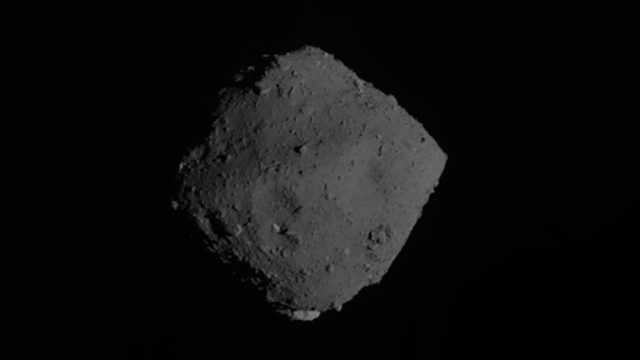
Wednesday, November 13, 2019: Japan's Hayabusa2 spacecraft departed from the asteroid Ryugu last night to begin its journey back to Earth. This is one of the photos Hayabusa2 took of Ryugu shortly after its departure. The spacecraft will continue to do "farewell observations" of the asteroid as it drifts farther away in space. It will arrive back on Earth at the end of next year with samples from the asteroid's surface. You can see the latest images from Hayabusa2 here. — Hanneke Weitering
Apollo 12: A Happy Moon Return
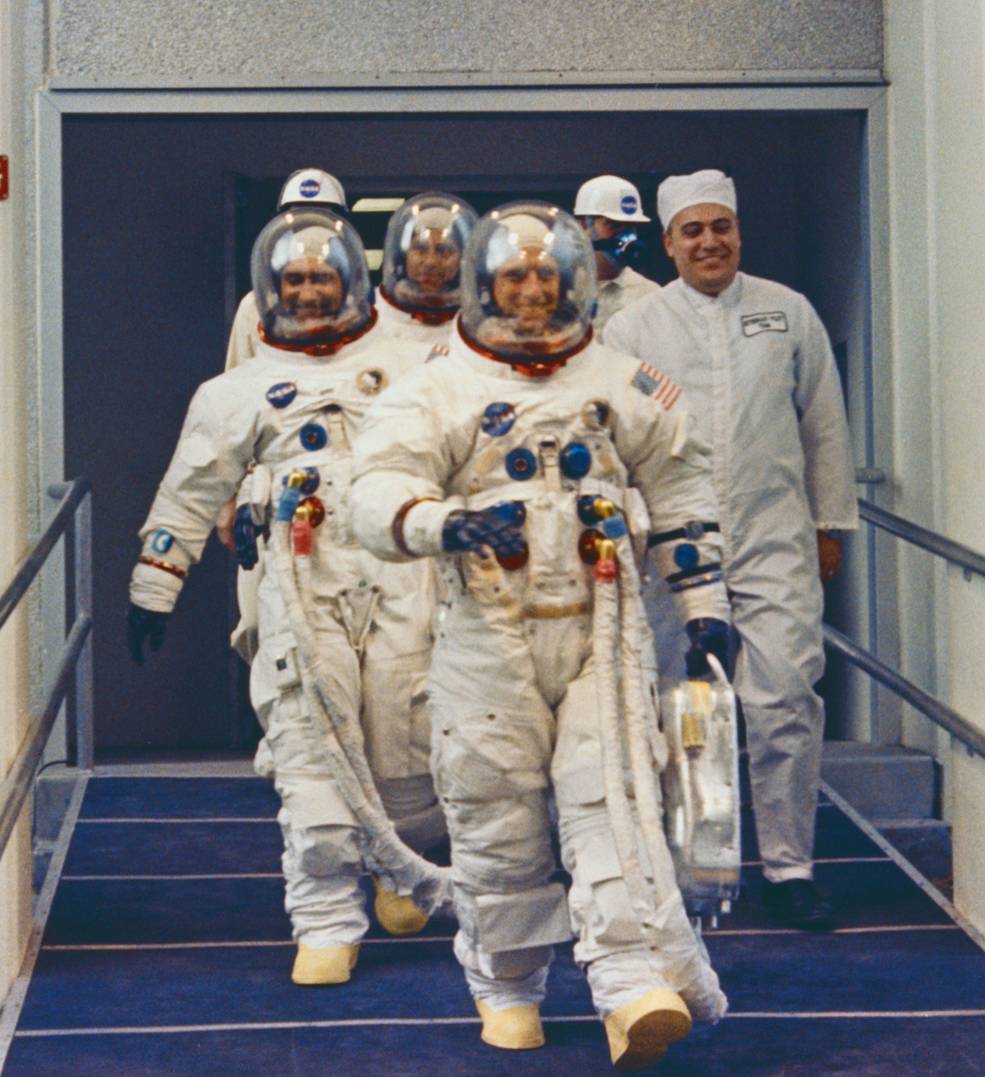
Thursday, Nov. 14, 2019: Apollo 12 astronauts Pete Conrad (front) Richard Gordon (left) and Alan Bean (center top in background) walk out to the Astrovan for the trip to the launch pad at NASA's Kennedy Space Center in Florida ahead of their Nov. 14, 1969 launch. The launch of Apollo 12, 50 years ago today, kicked off NASA's second crewed moon landing mission, and the first pinpoint lunar landing. Conrad, the mission's commander, and Bean as lunar module pilot landed their Intrepid lander within a short moonwalk of NASA's Surveyor 3 spacecraft. — Tariq Malik
Related: Celebrate NASA's Apollo 12 50th Anniversary with These Webcasts
More: Apollo 12: How a Passionate Scientist's Keen Eye Led to the First Pinpoint Moon Landing 50 Years Ago
Lunar Halo Over La Silla

Friday, November 15, 2019: A lunar "halo" lights up the night sky above the 3.6-meter telescope at the La Silla Observatory in Chile. This phenomenon happens when the moon is at an altitude of about 22 degrees above the horizon, where light refracts through icy cirrus clouds. "Light rays that do this tend to 'bunch up' at the angle that represents the least amount of deviation from their original path. For the particular shape of ice crystal lurking within the cirrus clouds, this minimum deviation angle happens to be around 22 degrees," ESO officials said in a description. — Hanneke Weitering
Space Station Selfie
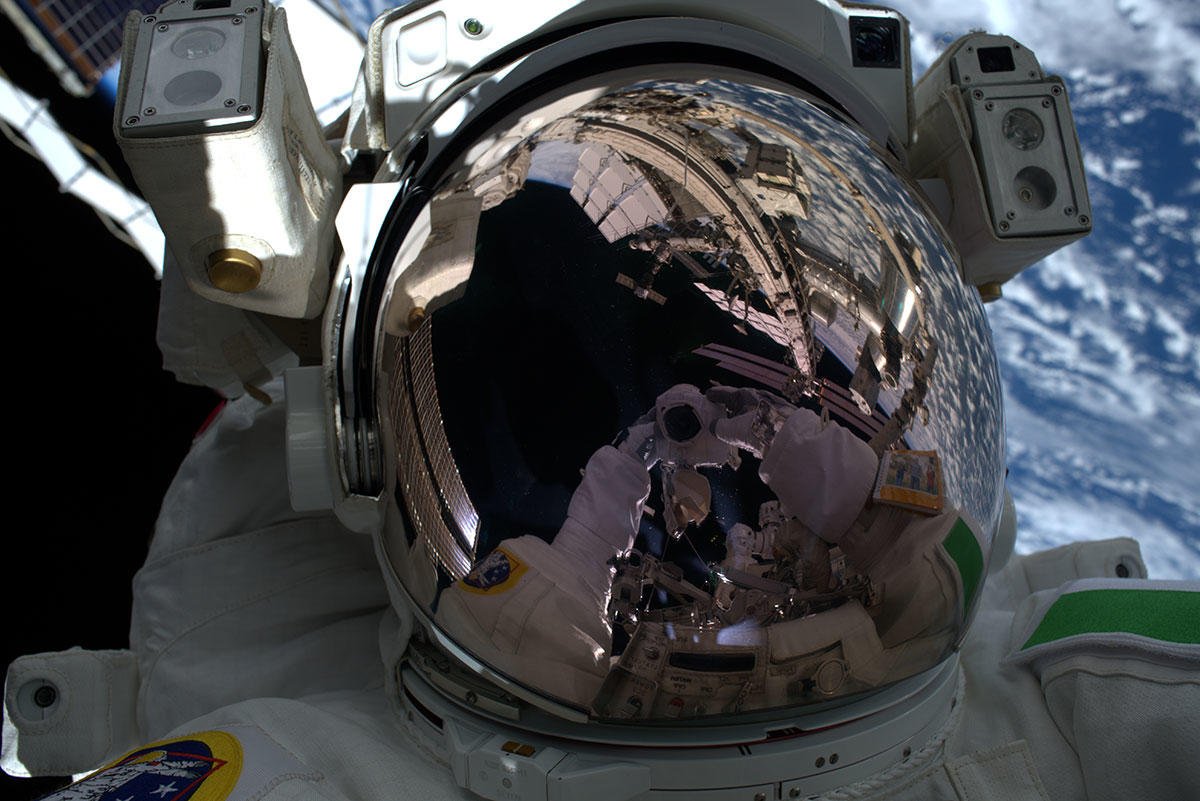
Monday, November 18, 2019: A view of nearly the entire International Space Station reflects off the helmet visor of European Space Agency astronaut Luca Parmitano in this "space selfie" he took while on a spacewalk last Friday (Nov. 15). He and NASA astronaut Drew Morgan spent 6 hours and 39 minutes working on the complicated repair of an ailing particle detector experiment known as the Alpha Magnetic Spectrometer (AMS). The duo will embark on the second of four spacewalks on Friday, Nov. 22, when they will continue working on AMS. — Hanneke Weitering
Related: The Best Astronaut Selfies in Space
A Vista Under the Milky Way
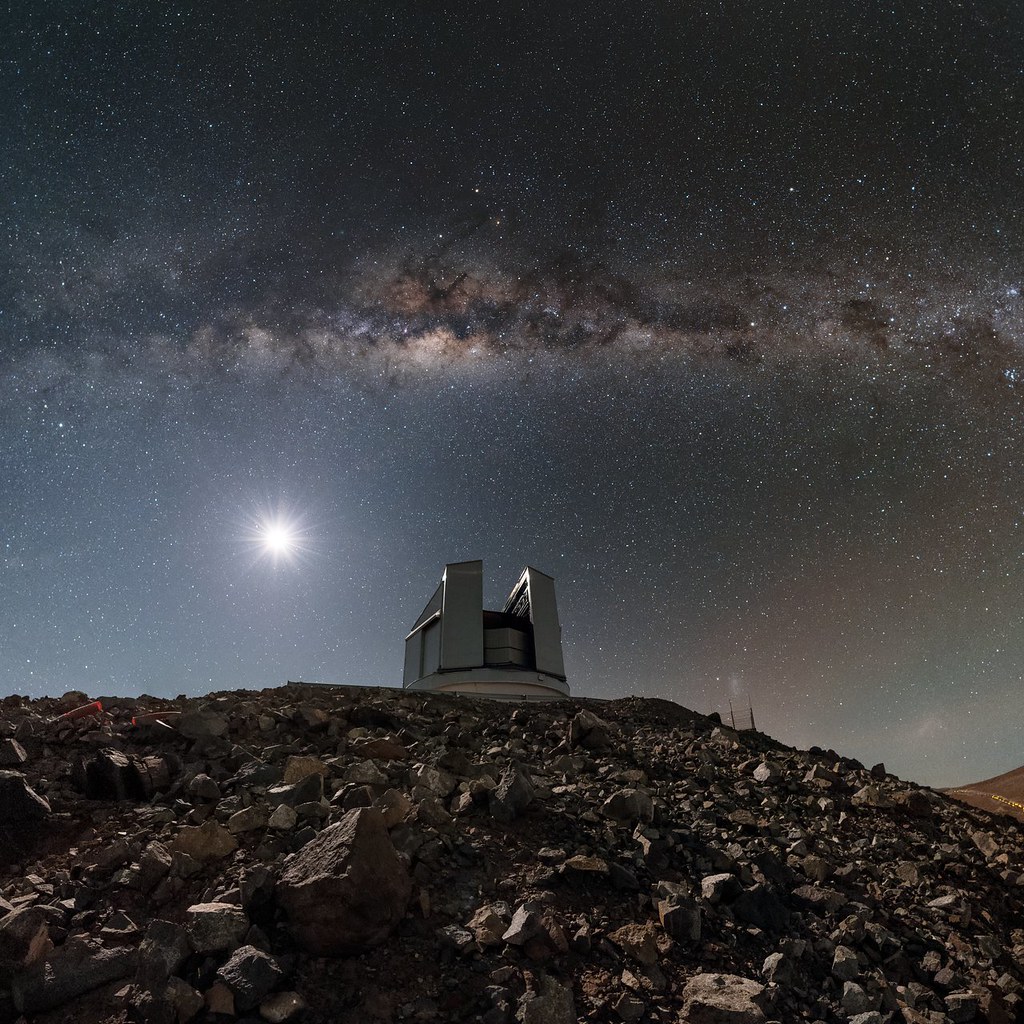
Tuesday, November 19, 2019: The Milky Way glistens above the Visible and Infrared Survey Telescope for Astronomy (VISTA) at the Paranal Observatory in northern Chile in this stunning night-sky view by European Southern Observatory photo ambassador Babak Tafreshi. Located on a rocky mountaintop in the Atacama Desert, VISTA is the world's largest telescope built to survey the sky in near-infrared light. While its surroundings are barren, VISTA's altitude and surroundings are ideal for astronomy, with almost no cloud cover or light pollution to soil the view. — Hanneke Weitering
Bye Bye, Debris Shield!
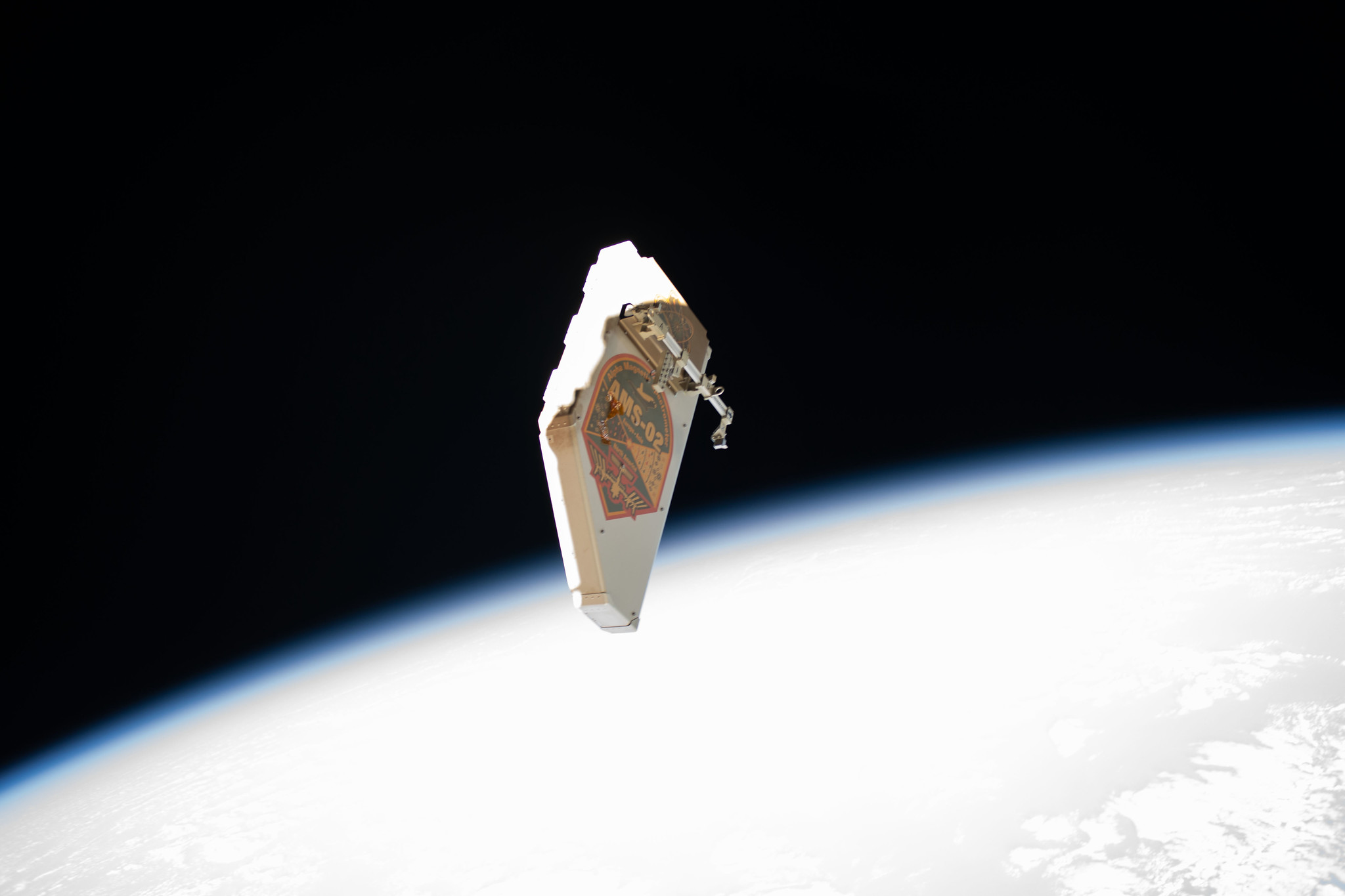
Wednesday, November 20, 2019: The debris shield that once protected NASA's Alpha Magnetic Spectrometer from micrometeoroid impacts floats away from the International Space Station after two astronauts removed it and flung it into space during a spacewalk on Nov. 15. European Space Agency astronaut Luca Parmitano used special tools to remove 13 screws and 10 fasteners to release the debris shield, after which NASA astronaut Drew Morgan jettisoned the shield, tossing it toward Earth to burn up in the atmosphere. This was the first of four spacewalks that these two astronauts are conducting to repair the ailing particle detector experiment, which was not designed to be serviced by astronauts in orbit, making these some of the most challenging spacewalks ever. — Hanneke Weitering
Hubble Spots a Strange Spiral Galaxy
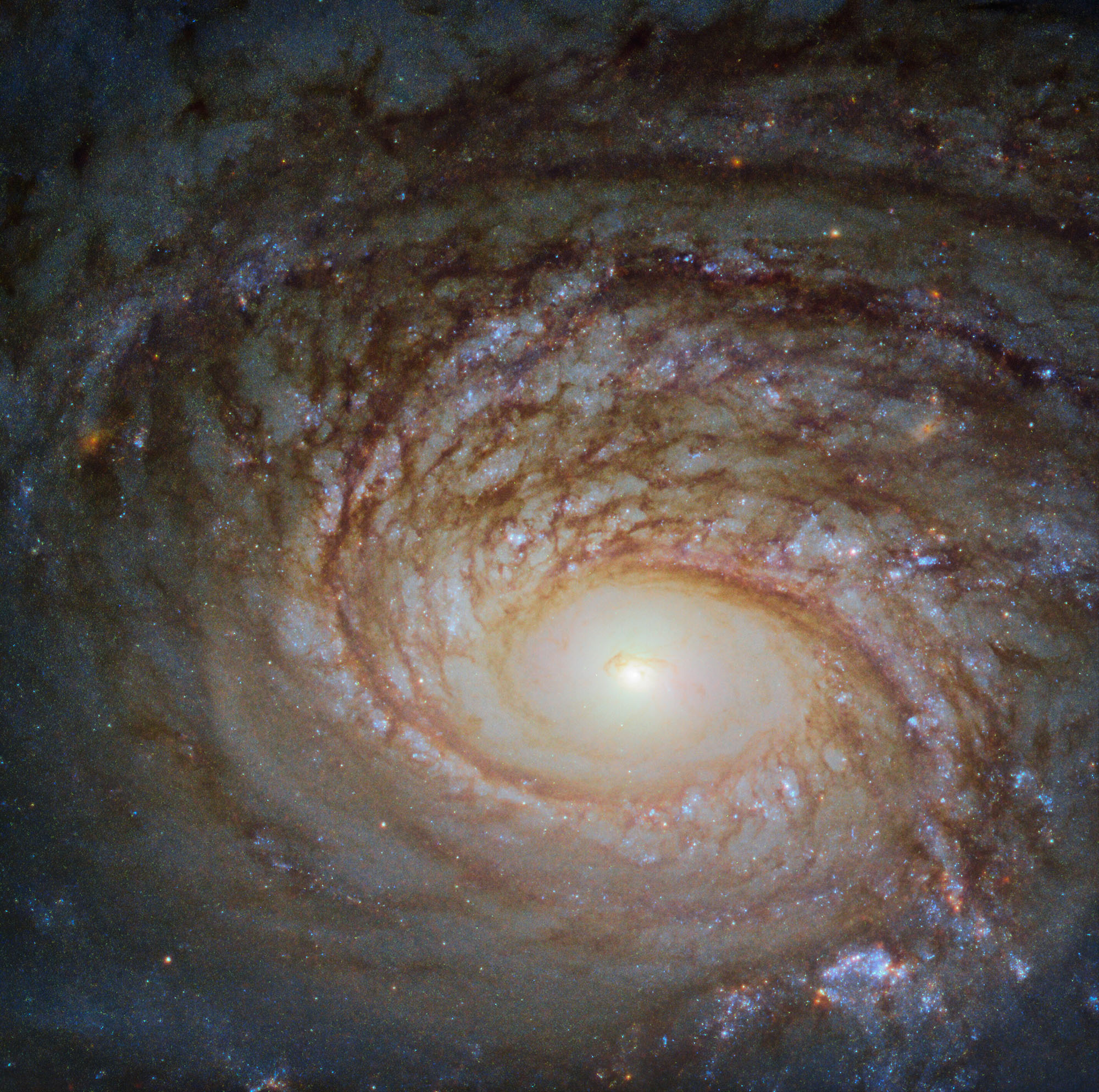
Thursday, November 21, 2019: The spiral galaxy NGC 772, seen here in a new image from the Hubble Space Telescope, bears some striking similarities to the Milky Way galaxy that we call home, with its spiral arms, glowing core and dark dust lanes. But there are some key differences between NGC 772 and the Milky Way.
For one, NGC 772 lacks the kind of bar-shaped structure of stars like the one that stretches across the center of the Milky Way. NGC 772 is classified as a peculiar, unbarred spiral galaxy, which means that it is "somewhat odd in size, shape or composition," according to NASA. Located about 130 million light-years away from Earth in the constellation Aries, NGC 772 is about twice the size of the Milky Way. — Hanneke Weitering
Luca Parmitano 'Rides' Canadarm2
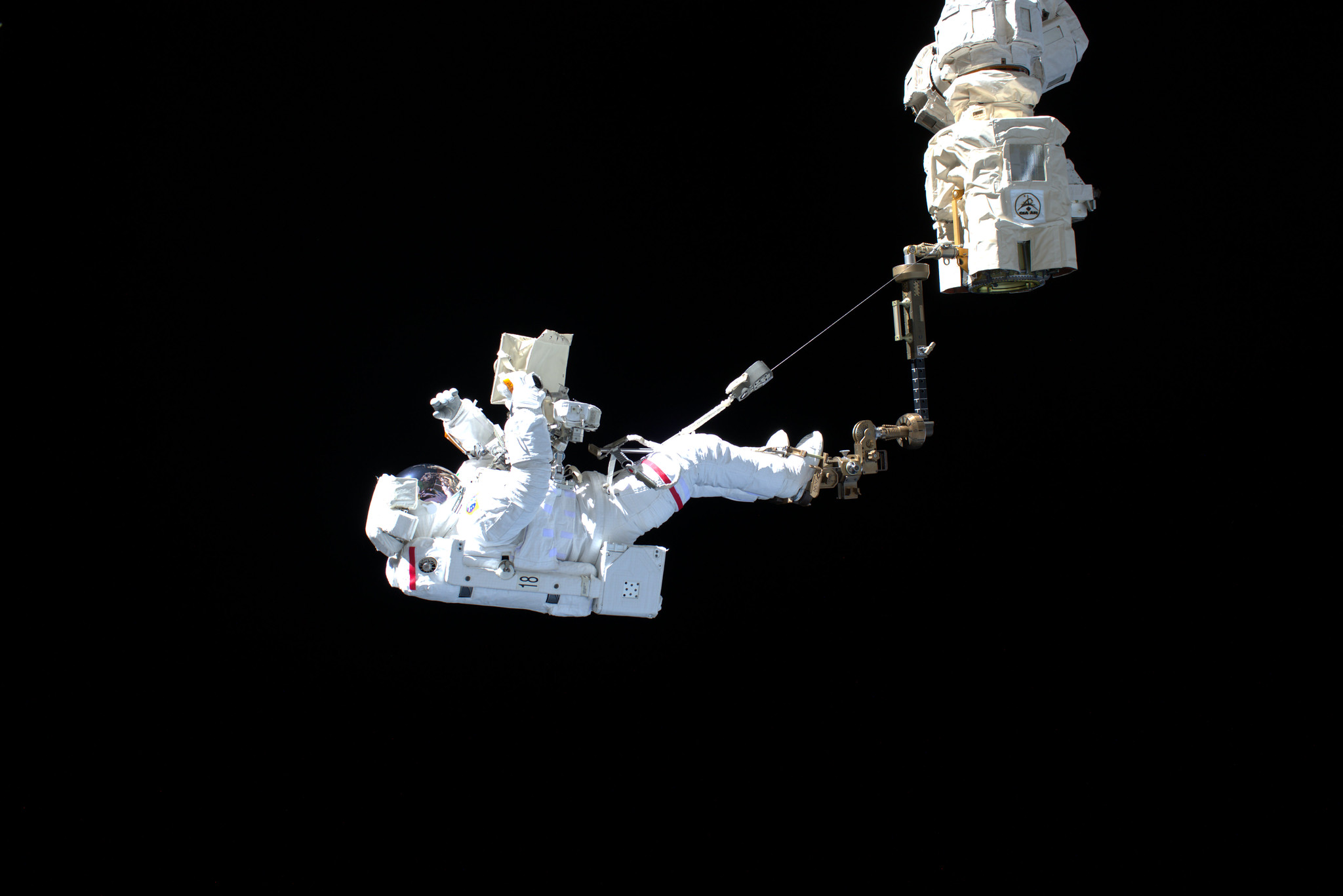
Friday, November 22, 2019: European Space Agency astronaut Luca Parmitano "stands" on the end of the International Space Station's Canadarm2 robotic arm during the first of four spacewalks to repair the Alpha Magnetic Spectrometer experiment together with NASA astronaut Drew Morgan, on Nov. 15. The spacewalking duo is at it again today; they set out this morning at 7:02 a.m. EST (1200 GMT) for the second spacewalk, which is expected to last about 6.5 hours. You can watch it live here on Space.com. — Hanneke Weitering
Orion Enters the Super Guppy
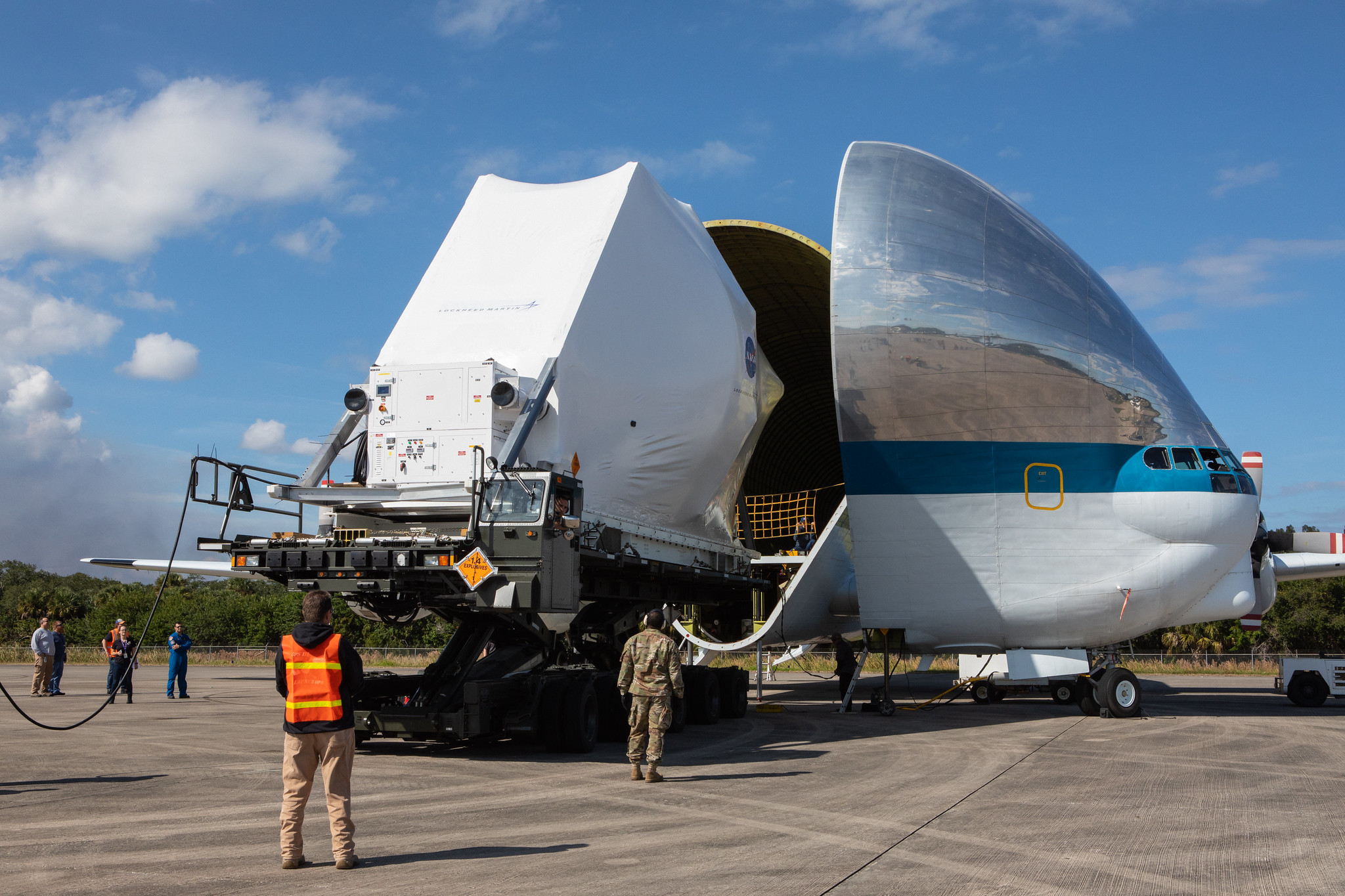
Monday, November 25, 2019: NASA's Orion spacecraft is loaded inside the belly of the Super Guppy aircraft at the Launch and Landing Facility runway at Kennedy Space Center in Florida, on Nov. 21. The spacecraft, which will fly on the first Artemis mission, was transported to NASA's Plum Brook Station in Sandusky, Ohio, for testing. — Hanneke Weitering
Hubble Eyes an Emission Galaxy

Tuesday, November 26, 2019: Looming some 135 million light-years from Earth in the constellation of Centaurus is the bright emission line galaxy NGC 3749, seen here in an image from the Hubble Space Telescope. Astronomers can learn a lot about a galaxy by studying its spectrum of light, particularly the wavelengths of light that are emitted or absorbed by elements it contains. NGC 3749 displays strong emission lines, which means that it is "bursting with star formation and energetic stellar newborns," the European Space Agency said in a statement. — Hanneke Weitering
Spacewalker Floats Above the Clouds
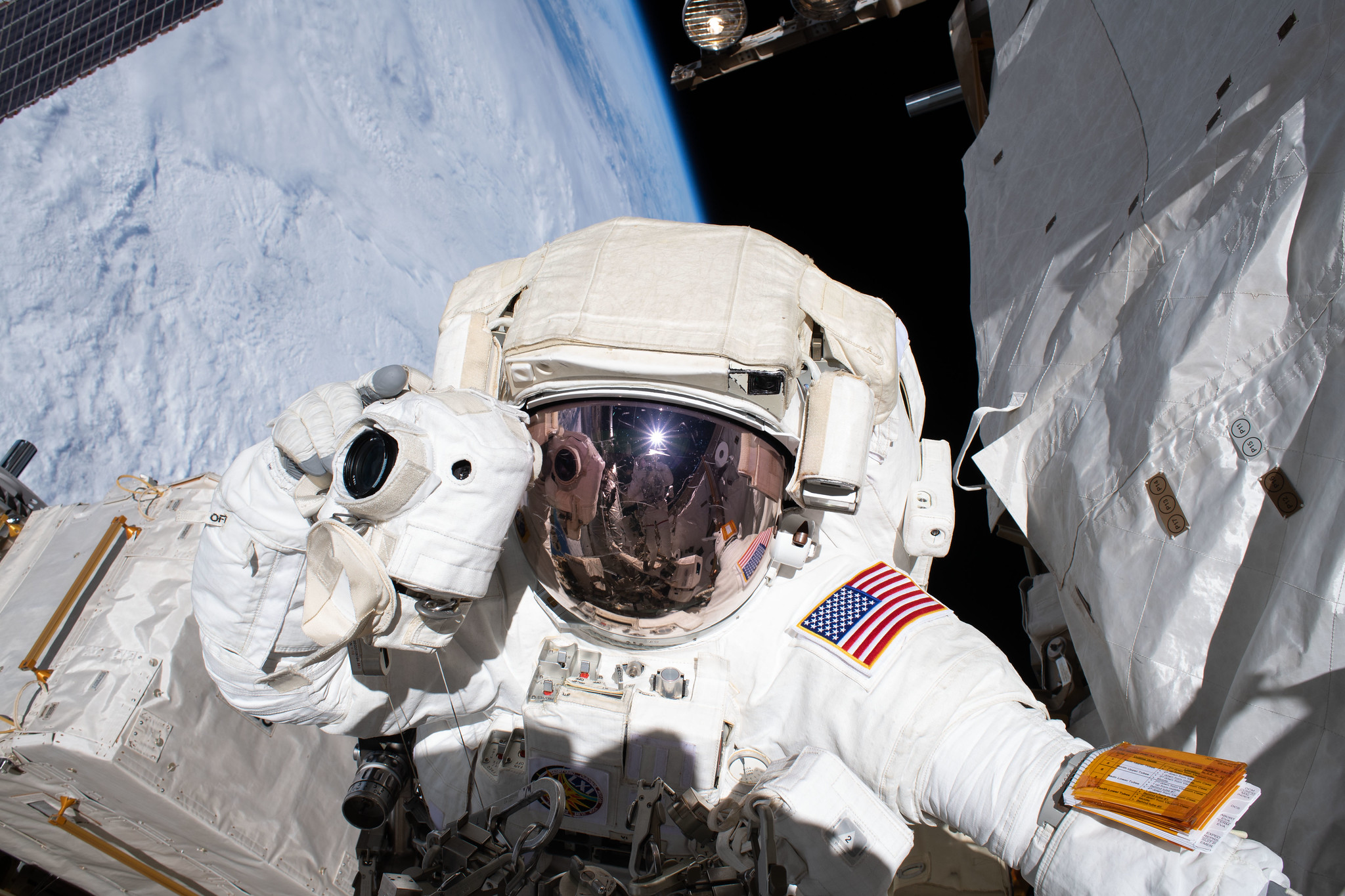
Wednesday, November 27, 2019: With his special space camera in hand, NASA astronaut Drew Morgan is seen working outside the International Space Station during his spacewalk with European Space Agency astronaut Luca Parmitano on Nov. 22. This was their second spacewalk together in which they worked to repair an ailing dark matter experiment called the Alpha Magnetic Spectrometer. The spacewalking duo will head out again for their third spacewalk together on Dec. 2. — Hanneke Weitering
Two Galactic Neighbors
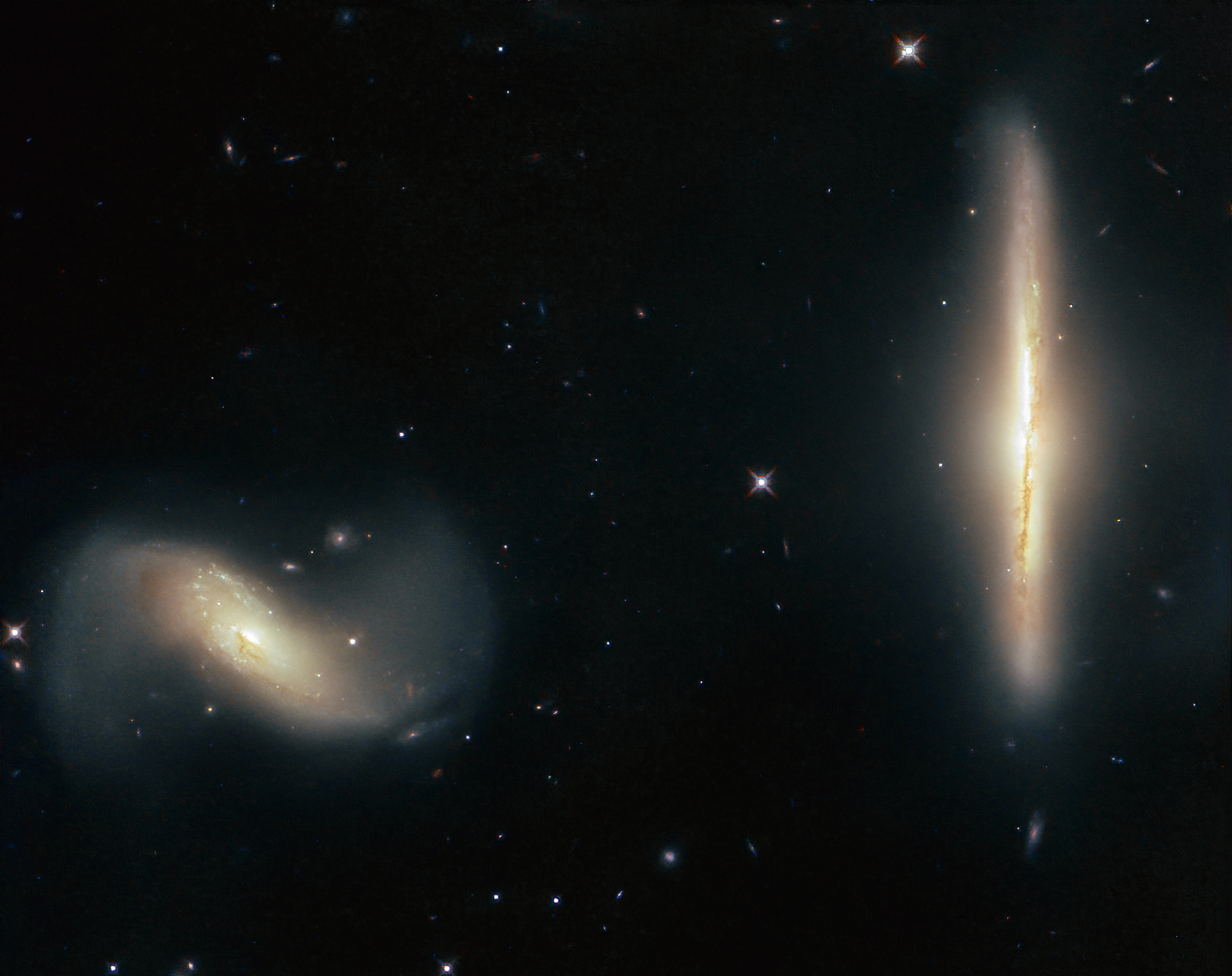
Friday, November 29, 2019: While it's common for galaxies to coexist peacefully in the same cosmic neighborhood, these two galaxies are a bit too close for comfort. The galaxies NGC 6286 (right) and NGC 6285 (left), collectively known as Arp 293, are tugging at each other with their mutually strong gravitational attraction, dragging wisps of gas and dust out from the galaxies and into interstellar space. This causes the galaxies to appear "smudged" and blurred from our perspective on Earth. The Hubble Space Telescope captured this image of the galactic pair, which are located more than over 250 million light-years from Earth in the constellation Draco. — Hanneke Weitering
Can't find the date you're looking for? It may have been a weekend or holiday, when we don't normally update our Image of the Day.
Click 'NEXT PAGE' below for December >
Join our Space Forums to keep talking space on the latest missions, night sky and more! And if you have a news tip, correction or comment, let us know at: community@space.com.

Space.com is the premier source of space exploration, innovation and astronomy news, chronicling (and celebrating) humanity's ongoing expansion across the final frontier. Originally founded in 1999, Space.com is, and always has been, the passion of writers and editors who are space fans and also trained journalists. Our current news team consists of Editor-in-Chief Tariq Malik; Editor Hanneke Weitering, Senior Space Writer Mike Wall; Senior Writer Meghan Bartels; Senior Writer Chelsea Gohd, Senior Writer Tereza Pultarova and Staff Writer Alexander Cox, focusing on e-commerce. Senior Producer Steve Spaleta oversees our space videos, with Diana Whitcroft as our Social Media Editor.









